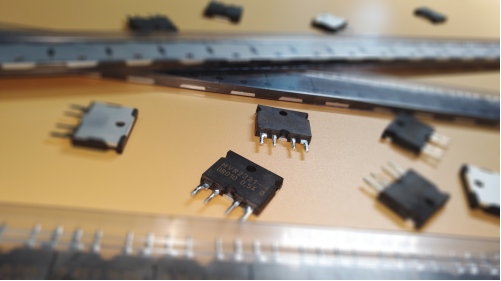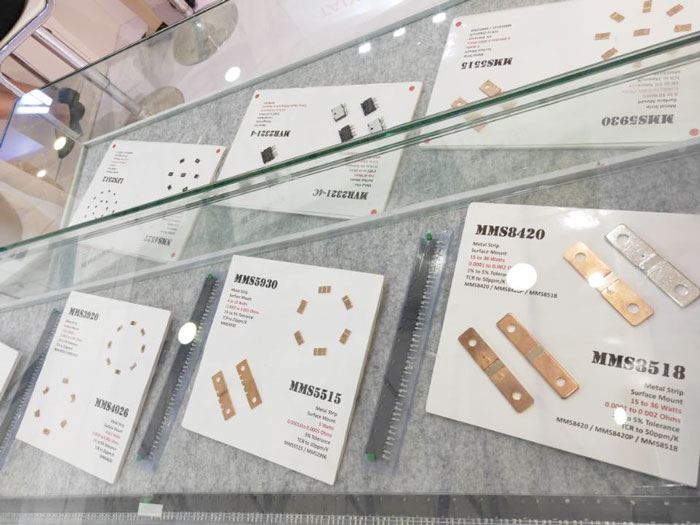Position:Home » Technical Articles
Shunt resistors selection for engineers' design
Writer:Microhm Page View:Date:2020-01-17
Shunt resistors make up a category of resistors that create a low resistance path, and they are widely used to measure high currents thanks to their low resistance, such as Microhm Electronics MVR series and MMS series.
Current measurement is required in many applications. For example, applications like over current protection, 4-20mA systems, battery chargers, high-brightness LED control, H-bridge motor control, or metrology need to monitor current.

How to Calculate Shunt Resistance
The technical constraints of shunt resistors differ from those of standard resistors. They are high-precision resistors with a low ohmic value (they can be expressed in microOhm when several hundreds of Amper currents must be measured). As accuracy is critical, current sensing is best achieved with a Kelvin connection (or four-terminal connection that removes the unwanted influences of lead resistance and lead sensitivity to temperature. MVR2321-4, MVR3825-4, MVR4618-4 of Microhm Electronics are four-terminal Kelvin resistors widely used in current sense applications.
Several factors can change the value of a shunt resistor, and they are split between reversible and irreversible effects. Long term stability is an irreversible change in resistance due to mechanical, electrical, and thermal loads. Reversible effects consist of mainly 2 components:
- Temperature Coefficient of Resistance (TCR): it is expressed in ppm/oC and characterizes the drift when the resistor is cooled or heated by a changing ambient temperature.
- Power Coefficient of Resistance (PCR): it is expressed in ppm/W and characterizes the power a resistor must dissipate.

Shunt Resistor Parameters
An important parameter for shunt resistors that is not significant for standard resistors is the thermal EMF. At the junction of 2 different conductive materials, a voltage variable with temperature (explaining why it’s called thermal EMF or thermocouple effect and expressed in µV/oC) shows up. The rate of change of voltage with temperature from an intermetallic junction is a function of the metallic combination. The sense of the voltage produced is either positive or negative on whichever side of the combination is being considered the input. It is presumed that all resistors are finally soldered to copper, and copper is then the reference metal. The following table shows some Thermal EMF values.
Based on thermal EMF, TCR, and cost trade off, manganin is the favorite choice for shunts resistors. For some resistance value, evanohm and Zeranin are used.
Current measurement is required in many applications. For example, applications like over current protection, 4-20mA systems, battery chargers, high-brightness LED control, H-bridge motor control, or metrology need to monitor current.

How to Calculate Shunt Resistance
The technical constraints of shunt resistors differ from those of standard resistors. They are high-precision resistors with a low ohmic value (they can be expressed in microOhm when several hundreds of Amper currents must be measured). As accuracy is critical, current sensing is best achieved with a Kelvin connection (or four-terminal connection that removes the unwanted influences of lead resistance and lead sensitivity to temperature. MVR2321-4, MVR3825-4, MVR4618-4 of Microhm Electronics are four-terminal Kelvin resistors widely used in current sense applications.
Several factors can change the value of a shunt resistor, and they are split between reversible and irreversible effects. Long term stability is an irreversible change in resistance due to mechanical, electrical, and thermal loads. Reversible effects consist of mainly 2 components:
- Temperature Coefficient of Resistance (TCR): it is expressed in ppm/oC and characterizes the drift when the resistor is cooled or heated by a changing ambient temperature.
- Power Coefficient of Resistance (PCR): it is expressed in ppm/W and characterizes the power a resistor must dissipate.

Shunt Resistor Parameters
An important parameter for shunt resistors that is not significant for standard resistors is the thermal EMF. At the junction of 2 different conductive materials, a voltage variable with temperature (explaining why it’s called thermal EMF or thermocouple effect and expressed in µV/oC) shows up. The rate of change of voltage with temperature from an intermetallic junction is a function of the metallic combination. The sense of the voltage produced is either positive or negative on whichever side of the combination is being considered the input. It is presumed that all resistors are finally soldered to copper, and copper is then the reference metal. The following table shows some Thermal EMF values.
Based on thermal EMF, TCR, and cost trade off, manganin is the favorite choice for shunts resistors. For some resistance value, evanohm and Zeranin are used.
Keywords:
Latest News
- Resistor's role in measuring and correcting LED,,,
- Single through-hole resistors' characteristics ,,,
- Why shunt resistors for current sense applicati,,,
- Metal-film resistors with small size, high resi,,,
- 36W High-Current Shunt Resistors MMS8420,,,
- 1W Surface Mount Resistor MPR1206,,,
- An Overview of Microhm Electronics' Resistor Pr,,,
- More anti-sulfur resistors used in harsh envir,,,
- Resistance changes with temperature,,,
- 140W TO247 High Power Heatsinkable Resistor,,,
- MMS5930 is ideal for current sensing in industr,,,
- Shunt resistors selection for engineers' design,,,
- Considerations for choosing precision resistors,,,
- Ceramic Encased Cement Resistors NWH Series for,,,
- Resistors for Passive Balancing in Battery-Pow,,,
Hot Articles
- Microhm will take part in 10th Automotive World,,,
- Thanks for Visiting Microhm's Booth E5-5706 in ,,,
- Resistors in Short Supply: Blame Cars,,,
- New lunch: High Power Precision Shunt Resistor,,,,
- How to Test a Resistor,,,
- Innovative Technology, Future Electric: Electri,,,
- What is Precision Resistors?,,,
- SMD Resistors Sizes and Packages,,,
- The Construction and Features of Metal Film Res,,,
- What is a TO-220 Resisor?,,,
- Hot Selling Products: Precision Shunt Resistors,,,
- How to Calculate the Equivalent Resistance Valu,,,
- What is a Fixed Resistor?,,,
- Resistors in LED Circuits,,,
- Resistors Types and Materials Overview,,,
Resistance applications
- BMS for New Energy Vehicle,,,
- Select the Right Resistor for Harmonic Filterin,,,
- The Main Application for High Precision and Low,,,
- Why Zero-Ohm Resistors?,,,
- Difference Between High Precision Resistors and,,,
- Urbanization Development Bringing the Transform,,,
- Shunt Resistor MMS8420 for High Current Stable ,,,
- Industrial Roberts Applied to Solar Photovoltai,,,
- Miniature future for passive electronic compone,,,
- Heater Blower Motor Resistor in Air Conditioner,,,
- Precision Resistors' Construction and TCR,,,
- Surface Mount Resistor's Size and Package ,,,
- The Measurement Accuracy of Automotive Shunt is,,,
- The Four Important Functions of Alloy Resistors,,,
- Carbon Film Resistors' Features and Application,,,
